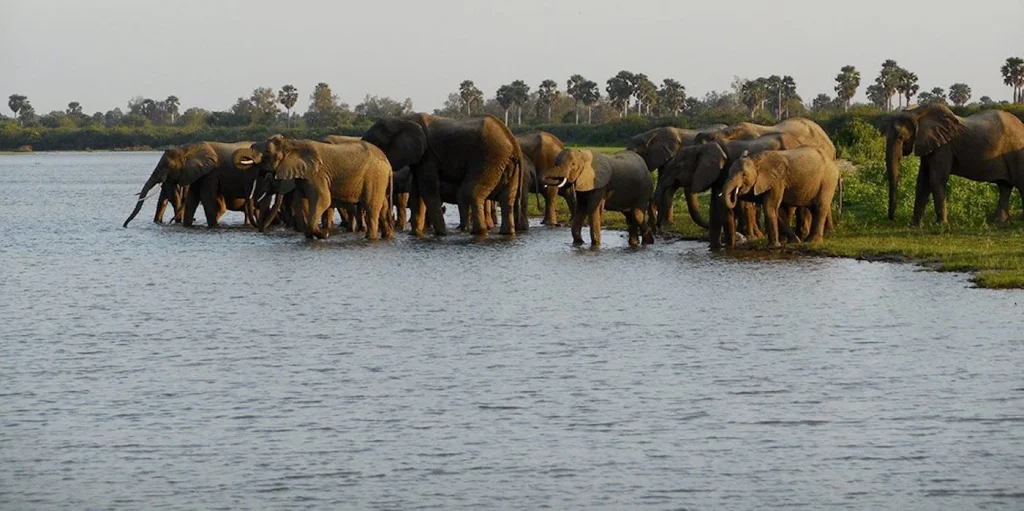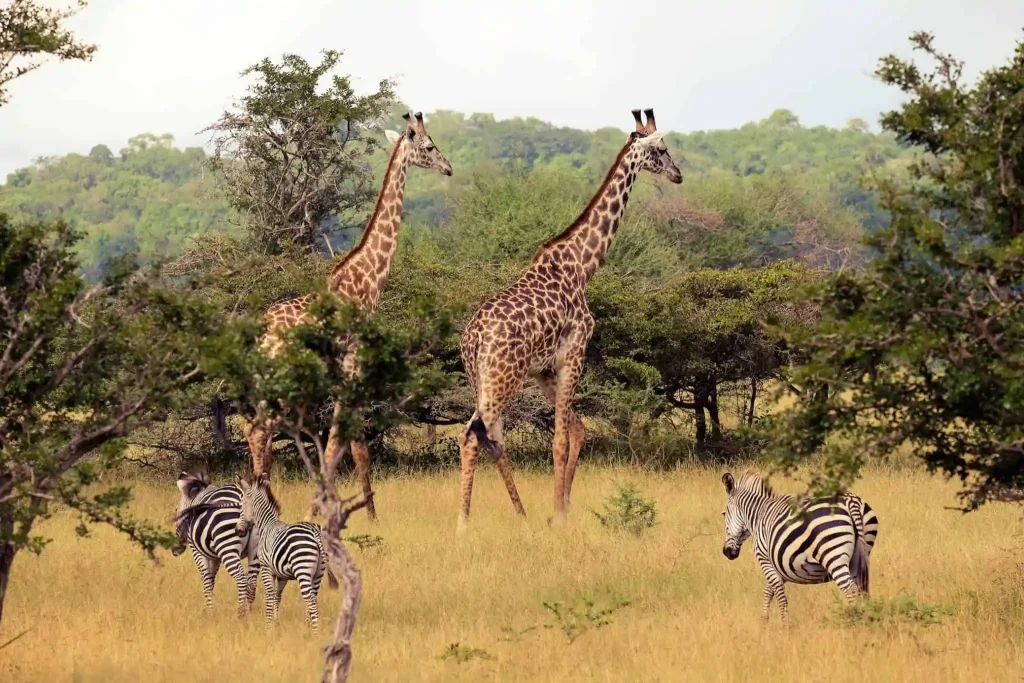Nyerere National Park
What Makes The Nyerere So Special
Nyerere National Park, named after Julius Nyerere, the founding father of Tanzania, is the largest national park in the country and one of the largest in Africa, covering over 30,000 square kilometers. It is part of the greater Selous Game Reserve, a UNESCO World Heritage Site, and offers an unspoiled wilderness experience. The park is characterized by diverse landscapes, including vast savannahs, miombo woodlands, swamps, and the meandering Rufiji River, which serves as a lifeline for the park’s incredible biodiversity.
The park is home to a stunning variety of wildlife, including some of Africa’s most iconic species such as elephants, lions, leopards, giraffes, and buffalo. Nyerere National Park is also renowned for its significant population of African wild dogs, one of the most endangered carnivores in Africa. Bird enthusiasts will find it a paradise, with over 440 recorded species, ranging from the colorful carmine bee-eater to majestic fish eagles. The Rufiji River adds a unique element, supporting aquatic species like hippos, crocodiles, and countless fish while providing opportunities for boat safaris.
Visitors to Nyerere National Park can enjoy a range of activities, from traditional game drives and walking safaris to boat safaris along the Rufiji River, which offer a different perspective of the park’s wildlife and scenery. The park is less crowded than other Tanzanian destinations, making it ideal for those seeking a more intimate and tranquil safari experience. Its untouched beauty and diverse ecosystems make Nyerere National Park a must-visit for nature lovers and adventurers alike.
Top Nyerere Safari Activities


Game Drives
Description: Explore the park’s vast savannahs and woodlands on guided game drives. Spot the Big Five (lion, leopard, elephant, buffalo, and rhino) and other wildlife such as giraffes, zebras, and the rare African wild dogs.
Boat Safaris
Description: Cruise along the Rufiji River, the park’s lifeline, to observe aquatic wildlife like hippos, crocodiles, and numerous water birds. Boat safaris also provide a chance to witness herds of elephants and other animals coming to drink at the riverbanks.
Walking Safaris
Description: Experience the thrill of exploring the wilderness on foot with a trained guide. Walking safaris allow you to observe the smaller details of the ecosystem, such as plants, insects, and animal tracks.
Birdwatching
Description: With over 440 bird species, Nyerere National Park is a birdwatcher’s paradise. Look out for colorful species like carmine bee-eaters, African fish eagles, and malachite kingfishers.
Fishing Safaris
Description: The Rufiji River and its tributaries are excellent for fishing. Visitors can try their hand at catching species like catfish and tigerfish.
The best time to visit the Mikumi depends on what you want to experience, as each season offers unique highlights
June to October is ideal for general wildlife viewing and witnessing the Great Migration river crossings.
January to March is perfect for calving season and predator activity.
For fewer crowds and lower costs, consider visiting during the short rains (November-December) or the green season (April-May).

